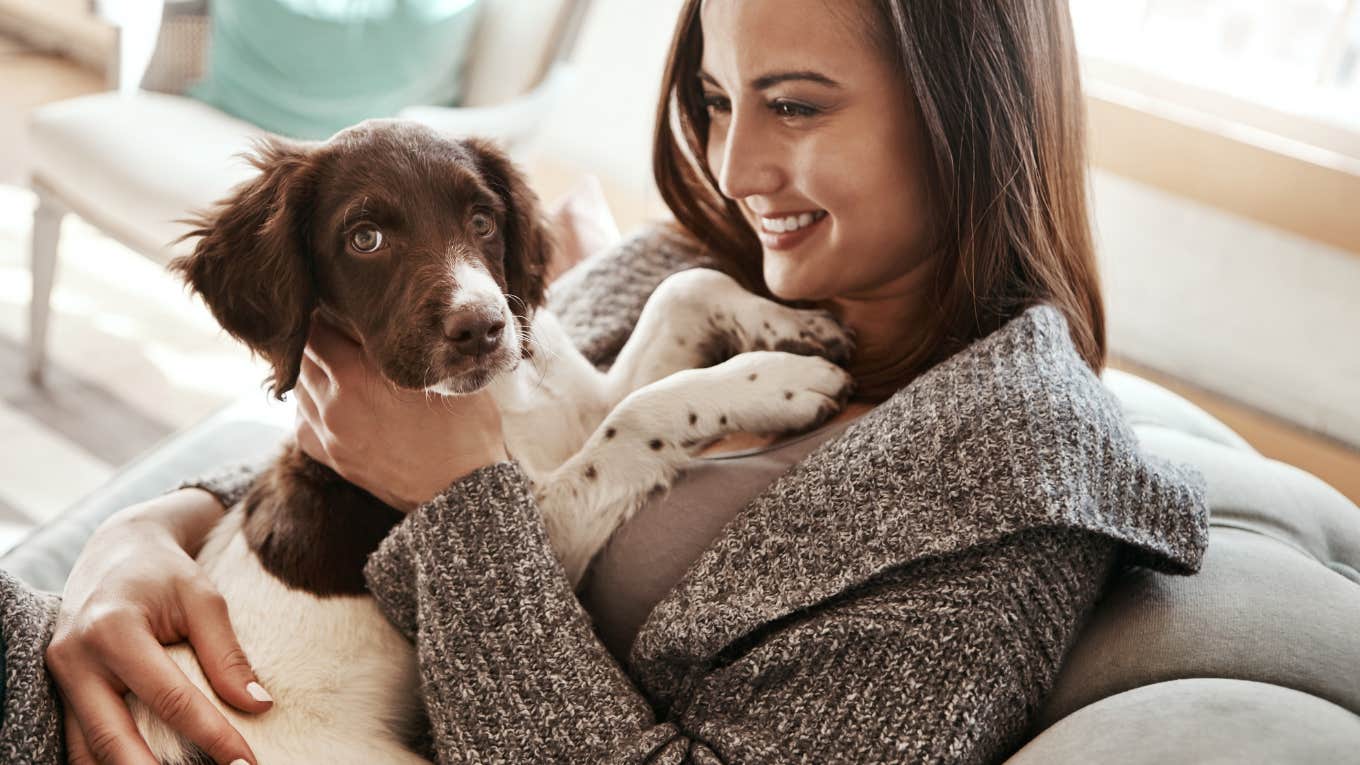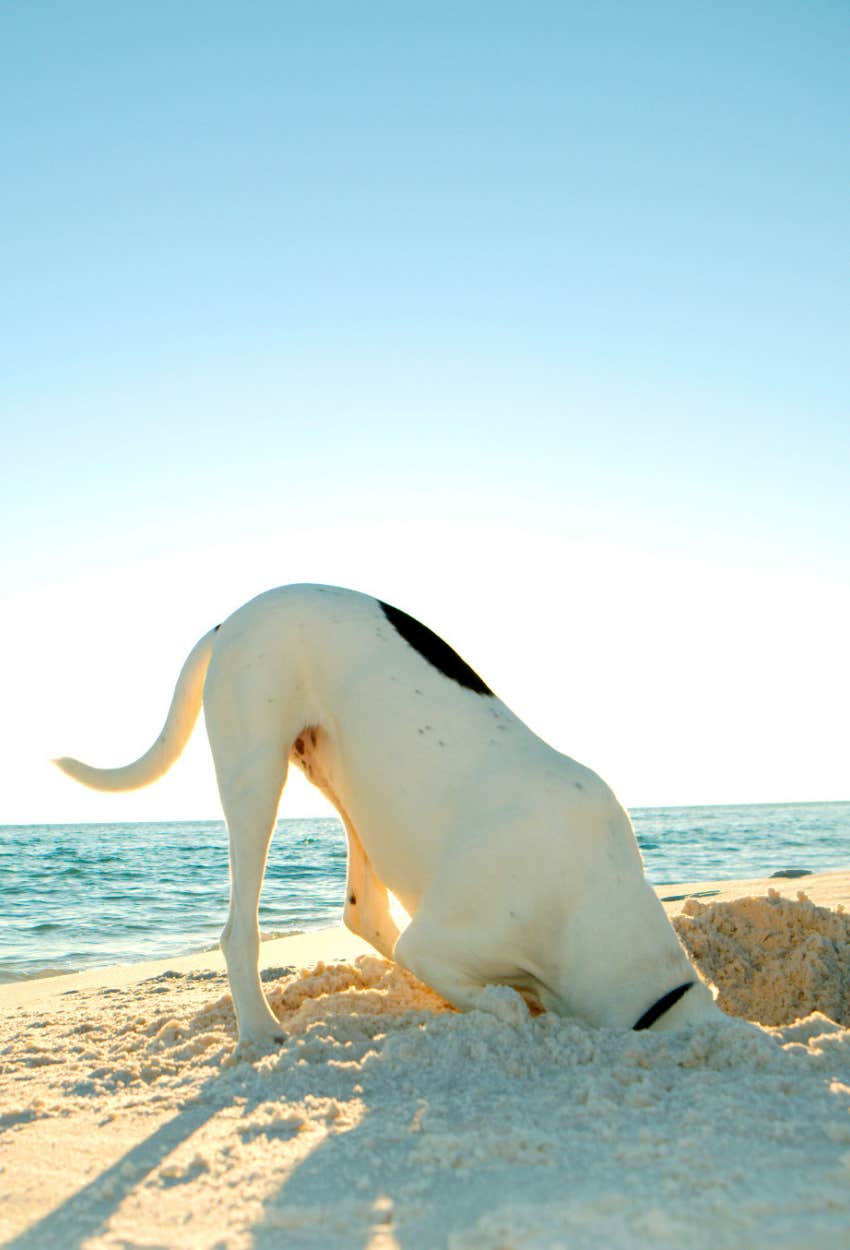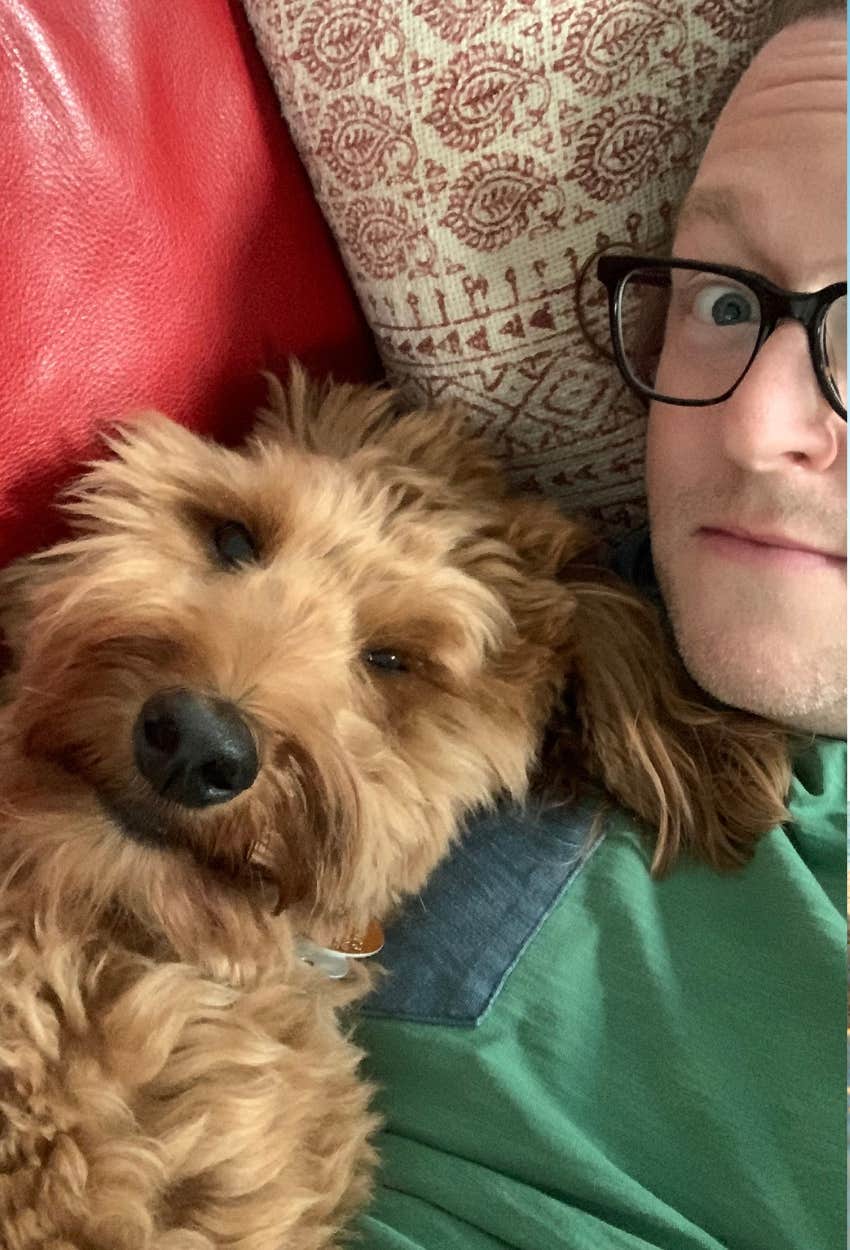3 Little Ways To Make Your Dog Feel Loved Without Stressing Them Out With Hugs, According To A Dog Trainer
Sorry to break it to you, but your dog probably hates a hug. Here's how to tell, and what to do instead.
 PeopleImages.com - Yuri A | Shutterstock
PeopleImages.com - Yuri A | Shutterstock When people don't like hugs, we usually think they're cold or emotionally stunted or something, but the dog world has different rules about pretty much everything, hugs included. They're really not fans, for the most part! So, how can you tell if your dog is one of these types? And how can you show affection without making them all uncomfortable? A dog trainer has some tips that can help.
Juliana DeWillems is a professional dog trainer whose company, JW Dog Training & Behavior, is based in Northern Virginia. In a video, she explained that for most of us, it's second nature to show our dogs affection in the ways we humans usually gravitate towards — mainly hugs. But dogs operate differently. "The human world is absolutely not designed for dog behavior," de Willems said. So, it's important to find ways to translate your affection into dogs' preferred forms, which mostly come down to behavior-based rewards that make them feel happy and accepted.
1. Let your dog be a dog
"Honor their dog needs," de Willems said. Many of dogs' favorite activities are things we don't allow, at least not in our houses, and for good reason, of course. Nobody wants a chewed-up couch.
But, de Willems said, "when dogs don't have an opportunity to do those things, it can cause a lot of challenges in your dog's life." So giving them to do things like barking, chewing, digging, and running around with the zoomies gives them a much-needed opportunity to be themselves that will definitely leave them feeling the love.
 stevecoleimages | Getty Images Signature | Canva Pro
stevecoleimages | Getty Images Signature | Canva Pro
2. Be affectionate in ways your dog enjoys
This is all about watching for body language cues, de Willems said. From hugs to simpler things like ear scritches, petting, and belly rubs, dogs aren't always in the mood for physical affection. But oftentimes, they will good-naturedly let you or someone else do it anyway.
So de Willems says to watch for indications that your dog is uncomfortable or showing signs of stress, like trying to get away from you or the person doing the petting, and shift accordingly. "The really important thing is that you are listening to your dog's communication that they're giving you through their body language," she said. "Love is not one-way communication."
3. Spend quality time with your dog
Unlike many cats, "dogs are a social species," de Willems explained, "so you'd be surprised how enriching and fulfilling it is for them to just be able to spend time with you and do things with you."
So, making time for the things your dog loves, whether that's playing frisbee or tug-o-war, letting them join you on your hikes, or just going for a ride with you in the car, can really send a message. The quickest way to my sister's dog Gus's heart, for example, is to play tug-of-war with him. 30 seconds is all it takes, and he'll be your new best friend. Those little things can make all the difference.
So, how can you tell if your dog doesn't like hugs?
The hug thing isn't a hard and fast rule, of course. The aforementioned Gus? He will actually climb up onto the couch and embrace you like your grandma or something. He even lays his head on your shoulder when he does it. He's a very affectionate floofy little weirdo who likes to be cradled like a little baby, as seen below. It's odd. Cute! But odd.
 John Sundholm | Canva Pro
John Sundholm | Canva Pro
Most dogs, however, don't like hugs because it feels like they're being restrained. "They don't like having their personal space invaded," de Willems said, especially around their faces. But as with other types of affection, many dogs will tolerate it even though they hate it.
The way to know the difference is, once again, body language, with stress signals like lip-licking, stiffening, trying to get away, and "whale eye," where a dog turns its body away from something but keeps looking at it, revealing the whites of their eyes, are all clues.
But the biggest tell, de Willems said, is if they shake off after the hug. "If they shake their whole body like they're wet but they're not wet, that's an indicator that that interaction was possibly just stressful for them," as shaking is sometimes a way for dogs to discharge energy from being stressed. Follow these tips and your dog will be feeling super loved and taken care of for years to come.
John Sundholm is a writer, editor, and video personality with 20 years of experience in media and entertainment. He covers culture, mental health, and human interest topics.

